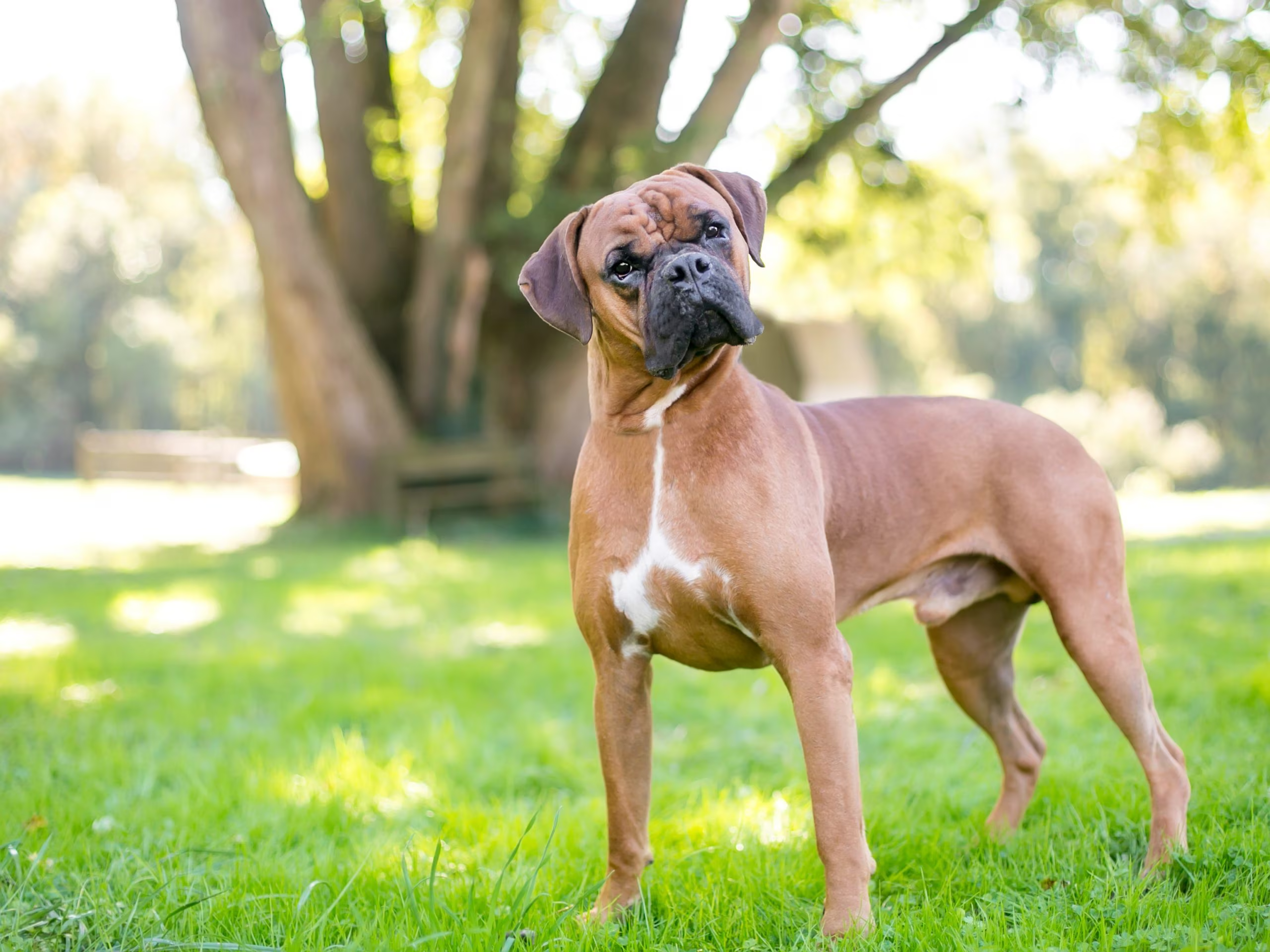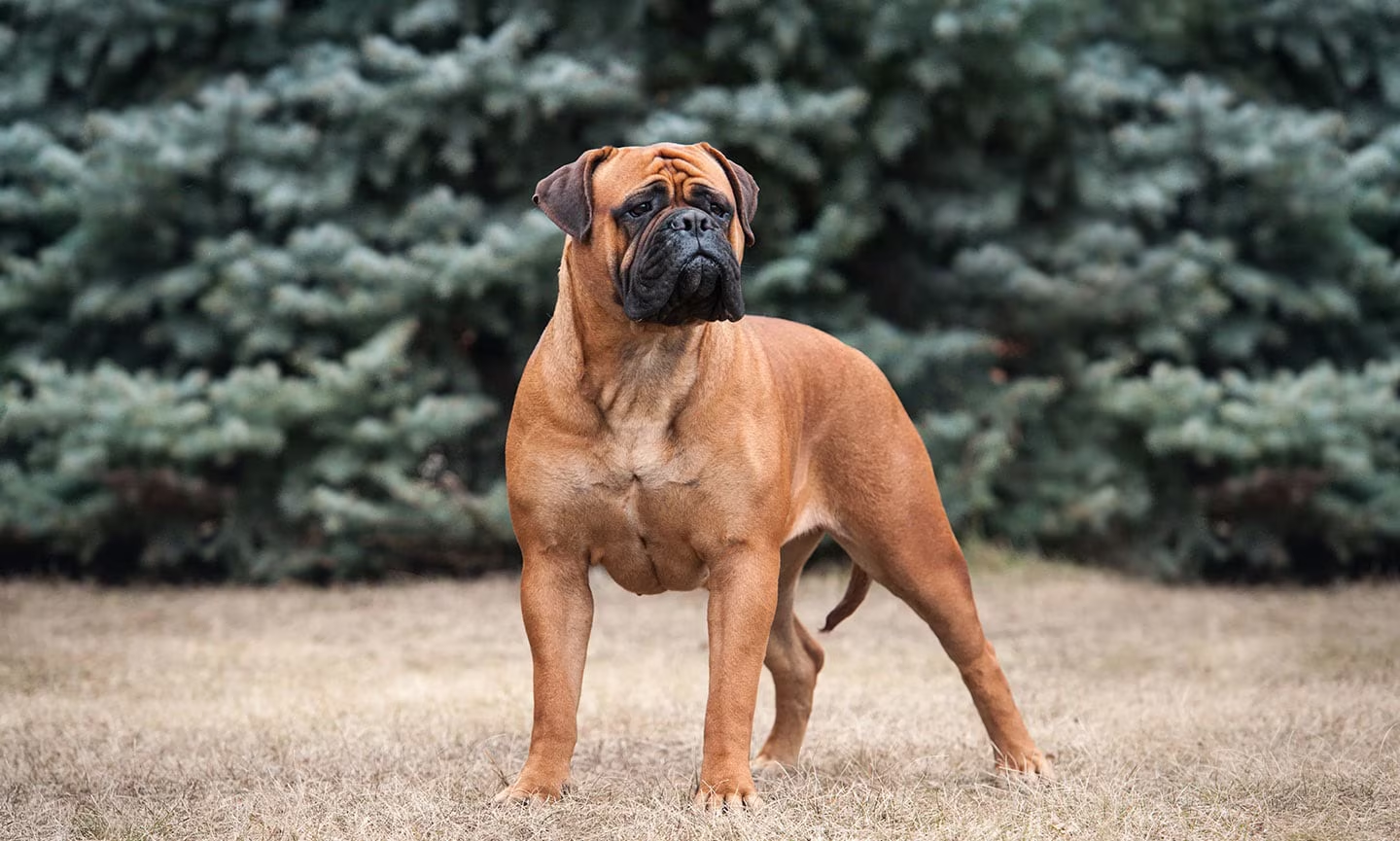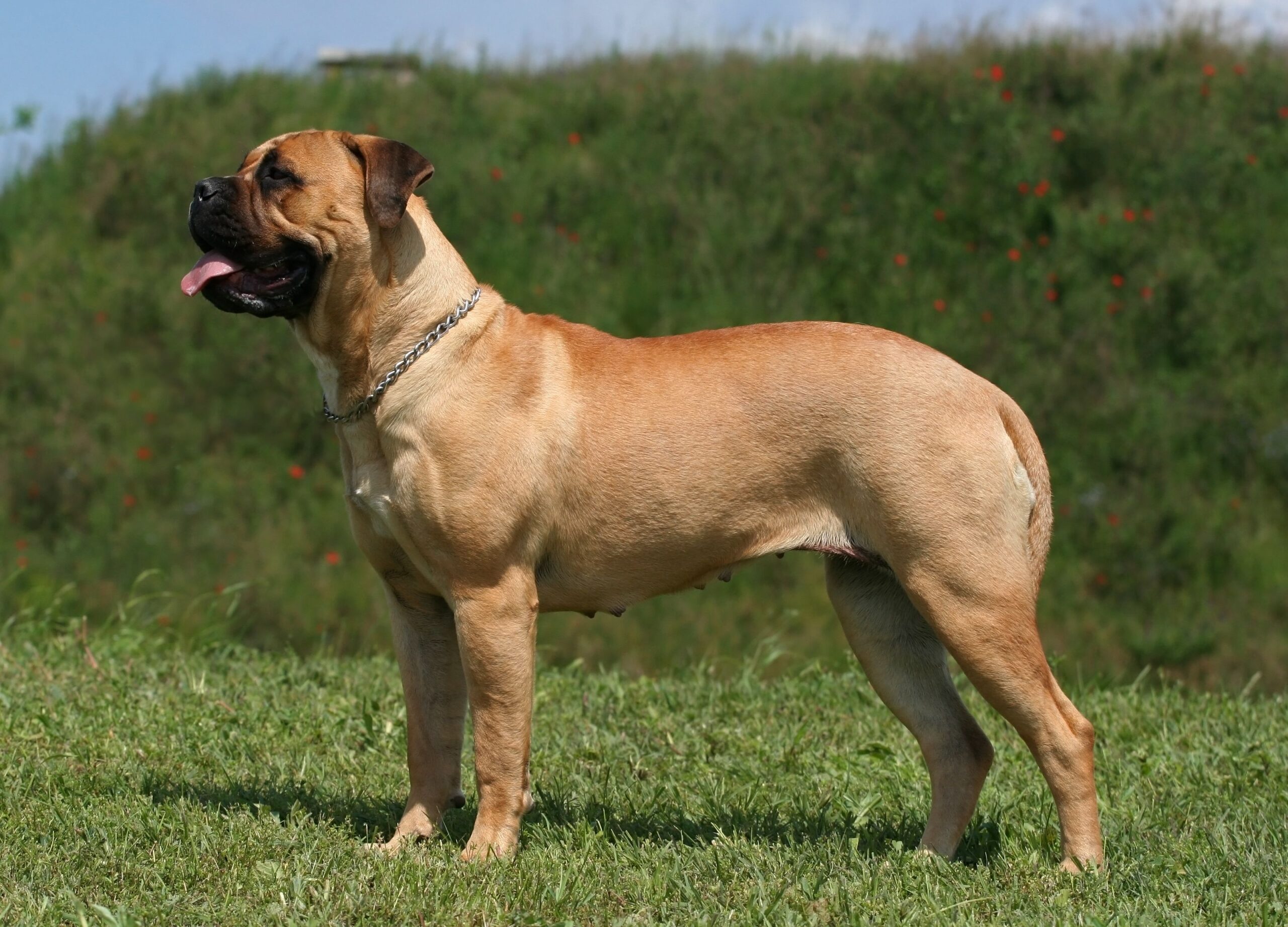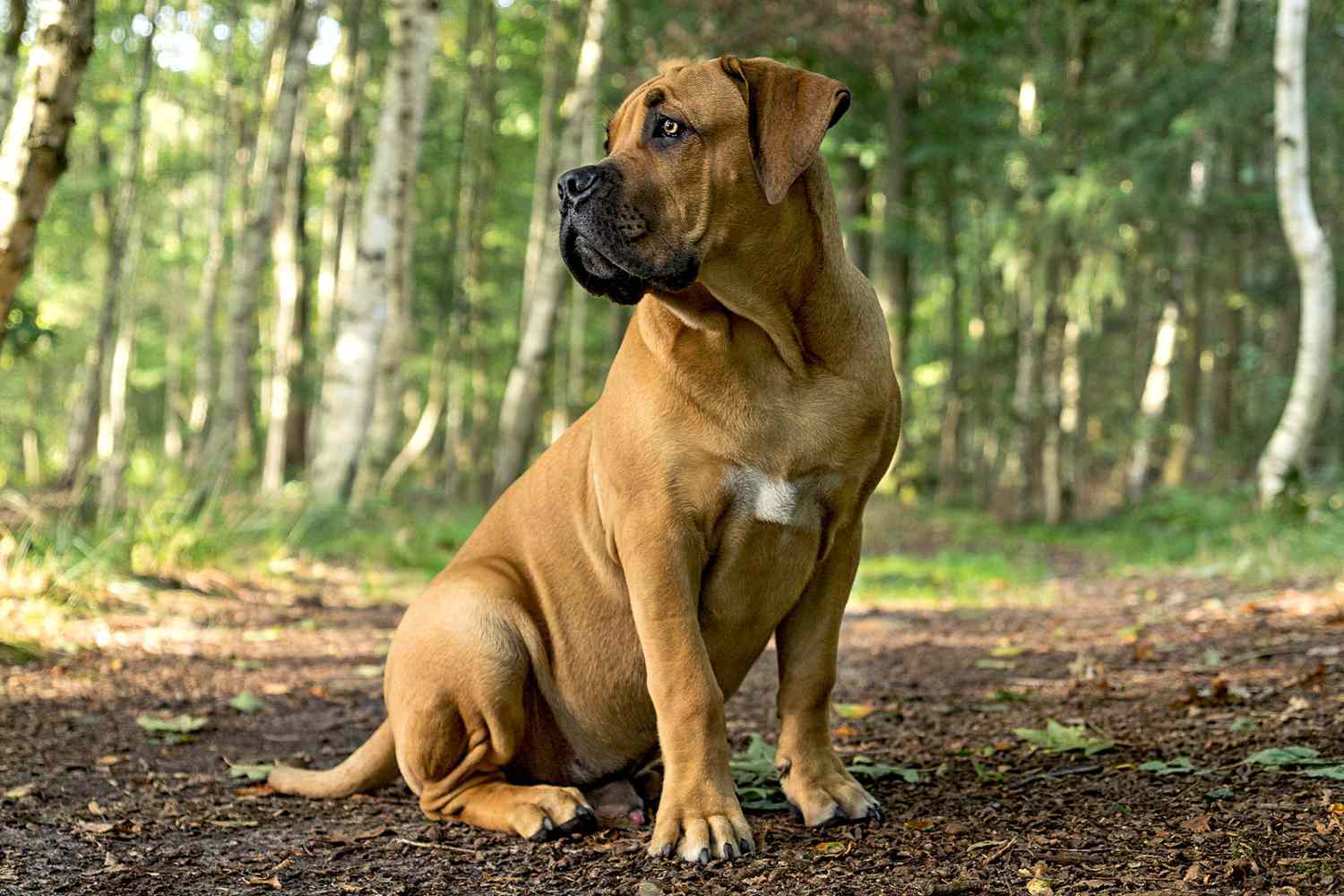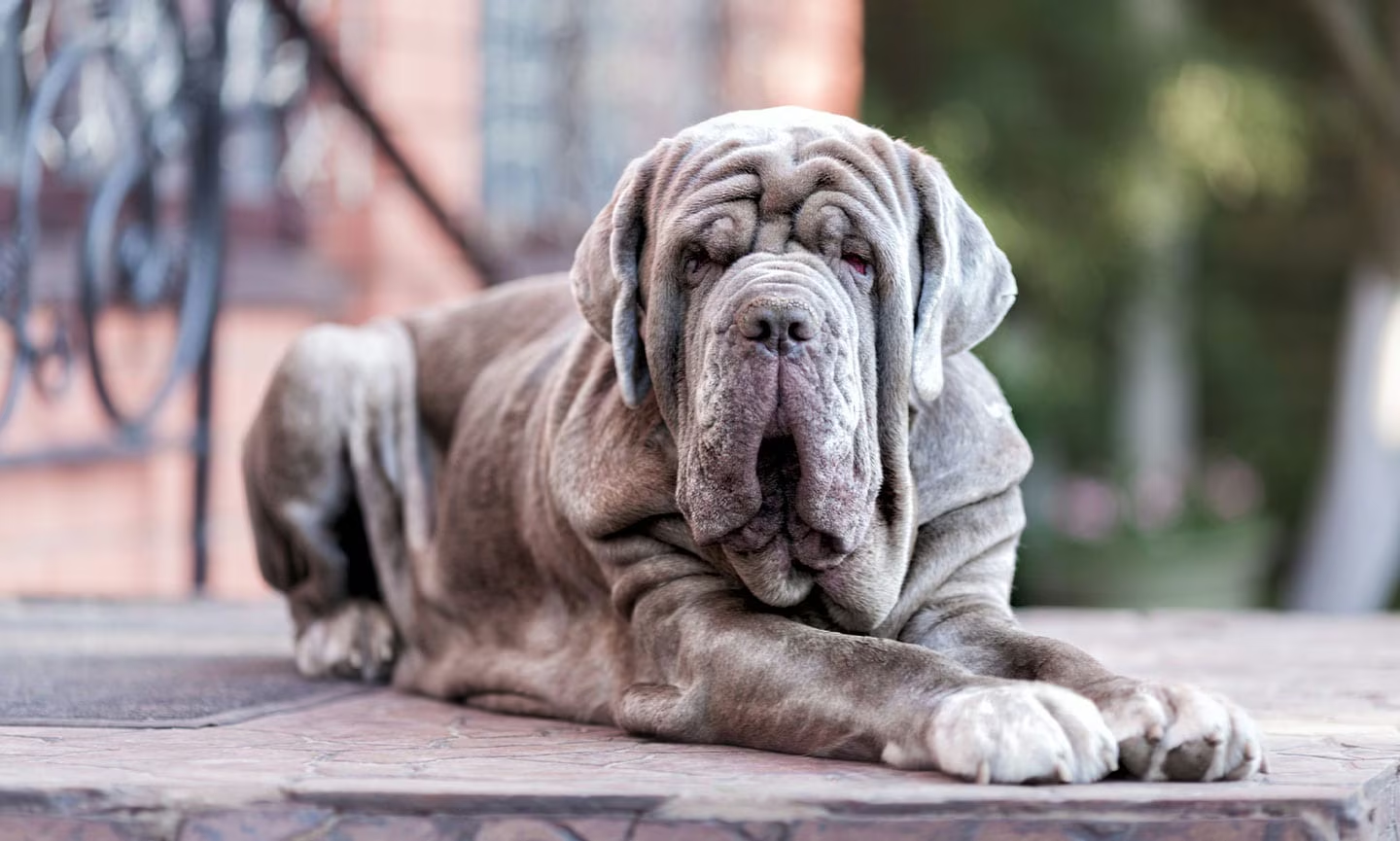Getting to Know the Boxer
The first time I locked eyes with a Boxer, I knew I was in for something special. There’s just something about those soulful brown eyes, muscular build, and that iconic wiggle-butt dance they do when they’re excited that completely melts your heart. If you’re considering adding a Boxer to your family or just curious about these charismatic canines, you’re in for a treat. These dogs aren’t just another breed – they’re an experience, a lifestyle, and quite possibly the most entertaining roommate you’ll ever have.
Often misunderstood because of their imposing athletic build, Boxers are actually some of the biggest goofballs in the dog world. Behind that strong, muscular exterior lies a playful spirit that never seems to grow up. As the proud parent of a Boxer named Bruno, I can confirm that these dogs have a unique ability to make you laugh daily with their clownish antics and expressive faces.
Whether you’re an active individual looking for an exercise partner, a family seeking a patient companion for your children, or someone who appreciates a dog with both brains and personality, the Boxer deserves your consideration. In this guide, I’ll walk you through everything you need to know about the breed’s fascinating history, distinctive characteristics, care requirements, and what it’s really like to share your life with these extraordinary dogs.
The Rich History of the Boxer Breed
Every time my Boxer strikes that regal pose – head held high, powerful stance, alert expression – I’m reminded that I’m looking at a dog with centuries of fascinating history. The Boxer we know and love today has quite the storied past, with roots tracing back to 19th century Germany.
Ancient Beginnings
The Boxer descends from two extinct German breeds: the Bullenbeisser (literally “bull biter”) and the Bärenbeiszer (“bear biter”). These powerful hunting dogs were used by noblemen to pursue and hold large game like wild boar, bear, and deer until hunters arrived. Some breed historians trace the Boxer’s ancestry even further back, linking them to the war dogs of the Assyrian empire.
The Bullenbeisser, often referred to as the German Bulldog, was eventually crossbred with mastiffs, bulldogs, and possibly some terrier breeds, leading to the creation of the modern Boxer. This breeding was intentional – the goal was to create a medium-sized, agile dog with a powerful jaw and a strong instinct to hold prey, but who was also more refined and suitable as a versatile working dog.
The Name “Boxer”
Ever wondered where the name “Boxer” comes from? While there are several theories, the most widely accepted explanation relates to the breed’s distinctive fighting style. Boxers have a unique way of playing and defending themselves by standing on their hind legs and “boxing” with their front paws – much like a human boxer in a ring. It’s adorable to watch and gives you a glimpse into why they earned their sporty name.
From Working Dog to Family Companion
By the late 19th century, the Boxer had been refined into the breed we recognize today. The first Boxer club was established in Munich in 1895, and the first breed standard was written soon after. Following World War I, Boxers were brought to the United States by returning soldiers who had fallen in love with these loyal, courageous dogs.
Throughout their history, Boxers have served in numerous working roles – as cattle dogs, butcher’s assistants (helping to control cattle in slaughterhouses), police dogs, military messengers during both World Wars, guide dogs for the blind, and even as some of the first service dogs. Today, while some Boxers still work in service and therapy roles, most have found their niche as beloved family companions – a job they excel at with their natural affection and protective instincts.
Physical Characteristics: The Boxer Look
There’s no mistaking a Boxer when you see one. Their distinctive appearance combines strength and elegance in a way few other breeds can match. Let’s break down the unmistakable physical traits that make Boxers stand out in the canine crowd.
Size and Build
Boxers are medium to large dogs with an athletic, muscular build that showcases their working heritage. Males typically stand 23-25 inches tall at the shoulder and weigh between 60-70 pounds. Females are slightly smaller, standing 21-23 inches and weighing 50-60 pounds. Despite their substantial muscle mass, Boxers are remarkably agile and light on their feet.
Their body is compact and powerful, featuring a broad, deep chest and strong, well-developed muscles. When a Boxer moves, you can’t help but admire the harmony and balance in their gait – they’re natural athletes with the stride to prove it.
That Distinctive Face
Perhaps the most recognizable feature of a Boxer is their uniquely expressive face. They have a broad, blunt muzzle with a distinctive underbite, giving them that somewhat grumpy yet endearing expression that Boxer lovers adore. Their dark, soulful eyes are forward-facing and alert, set against a backdrop of wrinkled forehead furrows that add to their expressive capabilities.
Traditionally, some Boxers had cropped ears that stood erect, but this practice has declined in many countries due to animal welfare concerns. Natural Boxer ears are set high on the head and fold forward when relaxed. Similarly, while tail docking was once standard practice, many Boxers today keep their natural tails, which are carried high and add to their joyful expression when excited.
Coat and Colors
Boxers have a short, smooth coat that lies close to the body, giving them that sleek, glossy appearance. Their coat comes in two main color varieties: fawn (ranging from light tan to mahogany) and brindle (fawn with black stripes). Many Boxers also have white markings on their face, chest, and paws, which traditionally were preferred to be limited to no more than one-third of the body.
White Boxers, while not recognized in the show ring by many kennel clubs, make up about 25% of all Boxers born and make wonderful pets. It’s worth noting that white Boxers have a higher incidence of deafness due to a lack of pigmentation in the inner ear, but many live perfectly normal lives with some accommodations for their hearing impairment.
Personality and Temperament: What to Expect
If you ask anyone who’s shared their life with a Boxer to describe the breed’s personality, get comfortable – you’re in for a long, enthusiastic conversation. Boxers have one of the most distinctive and beloved temperaments in the dog world, combining playfulness, loyalty, intelligence, and an endearing stubborn streak that keeps their owners on their toes.
The Eternal Puppy
One of the most charming aspects of Boxers is their refusal to fully grow up. While many dog breeds mellow dramatically with age, Boxers tend to maintain their puppy-like exuberance and playfulness well into their senior years. My 8-year-old Boxer still zooms around the house with the energy of a puppy, often initiating play by bringing toys or performing his signature “kidney bean” dance (a wiggly, curved-body pose that Boxer owners will immediately recognize).
This youthful spirit makes Boxers endlessly entertaining companions, but it also means they need owners who appreciate their energy and won’t try to suppress their naturally playful nature. A Boxer isn’t the dog for someone looking for a calm, dignified companion who will lounge quietly by the fireplace all day.
Family Devotion
Boxers form incredibly strong bonds with their families and are known for their unwavering loyalty. They often follow their favorite humans from room to room, wanting to be involved in whatever you’re doing – whether that’s cooking dinner, working from home, or even using the bathroom (privacy is a foreign concept to Boxers!).
This devotion extends especially to children, with whom Boxers typically show remarkable patience and gentleness despite their boisterous nature. They seem to instinctively understand that children require special care, and many Boxer owners report that their dogs are notably more careful and tender with the youngest family members.
Intelligence and Trainability
Boxers are smart cookies with a working dog’s intelligence and problem-solving abilities. However, their intelligence comes with a healthy dose of independent thinking and occasional stubbornness that can challenge novice dog owners. They’re not a breed that will blindly obey commands without understanding the “why” behind them.
That said, Boxers respond beautifully to positive reinforcement training methods that engage their minds and reward their efforts. They excel in obedience, agility, and even service work when properly motivated. Just don’t expect robot-like compliance – Boxers often add their own creative interpretation to commands, which is part of their charm.
Approach to Strangers
While Boxers are famously loving with their families, their approach to strangers can vary. Most are naturally alert and somewhat reserved with new people, a trait that makes them excellent watchdogs without excessive barking. They typically take a “wait and see” approach, observing newcomers before deciding if they’re friend or foe.
With proper socialization from puppyhood, Boxers can learn to be welcoming and appropriate with visitors. Without it, they may become overly protective or unnecessarily suspicious. This is why early and ongoing exposure to different people, places, and situations is crucial for developing a well-adjusted Boxer.
Boxer Health: Understanding Common Concerns
Like all purebred dogs, Boxers have certain health considerations potential owners should be aware of. While this might seem like a downer section, I believe knowledge is power – understanding potential health issues helps you provide proactive care and recognize early warning signs, ultimately leading to a healthier, happier dog.
Heart Conditions
Boxers have a higher-than-average risk of certain cardiac issues, including aortic stenosis (a narrowing of the aortic valve) and arrhythmogenic right ventricular cardiomyopathy (ARVC), sometimes called “Boxer cardiomyopathy.” Regular cardiac screenings with a veterinary cardiologist, especially as your Boxer ages, can help catch these conditions early.
The good news is that many heart conditions can be managed with medication and lifestyle adjustments when caught early. Working with a reputable breeder who conducts cardiac screening on their breeding dogs can also reduce the risk of these inherited conditions.
Cancer Risk
Unfortunately, Boxers have an elevated risk for certain cancers, particularly mast cell tumors, lymphoma, and brain tumors. White Boxers may also have a higher risk of skin cancers due to their lack of pigmentation. Regular veterinary check-ups and prompt investigation of any unusual lumps, bumps, or changes in behavior are essential for early detection.
While cancer can be devastating, advances in veterinary oncology are providing more treatment options than ever before, and many Boxers with cancer can enjoy good quality of life with appropriate care.
Joint and Bone Issues
Like many medium to large breeds, Boxers can be prone to hip dysplasia and other joint issues. These conditions range from mild to severe and can often be managed with medication, weight management, appropriate exercise, and in some cases, surgery.
Additionally, Boxers are susceptible to degenerative myelopathy, a progressive spinal cord disease that typically affects older dogs. While there’s no cure, supportive care can help maintain quality of life, and genetic testing can help identify carriers of the disease.
Brachycephalic Challenges
As a brachycephalic (short-nosed) breed, Boxers can experience some respiratory challenges, although their muzzles are not as extreme as breeds like Bulldogs or Pugs. Still, they may struggle in hot or humid weather and can be prone to overheating. Air travel can also be more challenging for Boxers due to their facial structure.
To keep your Boxer comfortable, avoid strenuous exercise during hot weather, provide plenty of shade and water when outdoors, and be alert for signs of heat stress like excessive panting or drooling, which require immediate cooling.
Preventative Care
The best approach to Boxer health is proactive preventative care. This includes:
- Regular veterinary check-ups (twice yearly for adult Boxers is ideal)
- Appropriate vaccination schedule based on lifestyle and risk factors
- Consistent parasite prevention
- Dental care (Boxers can be prone to dental issues due to their underbite)
- Weight management to prevent extra stress on joints and heart
- Age-appropriate screening tests (cardiac evaluations, bloodwork, etc.)
Working with a veterinarian who is familiar with Boxer-specific health concerns is invaluable for keeping your dog in top condition throughout their life.
Caring for Your Boxer: Exercise, Training, and Grooming
Bringing a Boxer into your life means committing to meeting their specific care needs. The good news is that while Boxers do require consistent attention in certain areas, they’re relatively low-maintenance in others. Let’s break down what your Boxer needs to thrive.
Exercise Requirements
Boxers are energetic, athletic dogs who need substantial daily exercise to stay physically healthy and mentally balanced. Plan for at least 1-2 hours of physical activity each day, ideally split between multiple sessions. A bored, under-exercised Boxer can quickly become destructive and develop problem behaviors.
Effective exercise for Boxers includes:
- Brisk walks or jogging (once fully grown, around 18-24 months)
- Interactive play sessions (fetch, tug-of-war, frisbee)
- Supervised off-leash time in securely fenced areas
- Canine sports like agility, rally obedience, or tracking
- Swimming (though not all Boxers take to water naturally)
Remember that Boxers are sensitive to extreme temperatures due to their short muzzles and coats. In hot weather, exercise early morning or evening and always have water available. In cold weather, consider a dog coat for outdoor activities.
Training Approaches
Training a Boxer requires understanding their unique combination of intelligence, sensitivity, and occasional stubbornness. Harsh methods or punishment-based training will backfire with this breed, leading to either shutdown or increased stubbornness.
Positive reinforcement training – using rewards like treats, praise, and play to mark desired behaviors – works wonderfully with Boxers. They respond enthusiastically to upbeat, consistent training that engages their problem-solving abilities. Keep sessions short (5-15 minutes) but frequent, and always end on a positive note.
Socialization is particularly important for Boxers, who can become overly protective or fearful without proper exposure to different people, animals, and environments during their formative months. Puppy classes are an excellent start, followed by ongoing positive experiences throughout adolescence.
Grooming Needs
One area where Boxers truly shine is in their minimal grooming requirements. Their short coat means no professional grooming appointments and minimal shedding compared to longer-haired breeds. However, they do shed, so regular brushing (once or twice weekly) with a rubber curry brush or grooming mitt helps remove loose hair and keeps their coat gleaming.
Boxers only need bathing when they’re actually dirty – too frequent bathing can strip the natural oils from their coat. Pay special attention to cleaning facial wrinkles, particularly after meals or outdoor adventures, as these folds can harbor moisture and bacteria if not kept clean and dry.
Don’t forget regular nail trims (usually every 3-4 weeks), ear cleaning, and dental care. Establishing these routines early helps your Boxer accept grooming as a normal, positive part of life.
Nutritional Needs
Feeding your Boxer a high-quality, balanced diet appropriate for their age, size, and activity level is essential for maintaining health and preventing obesity, which can exacerbate joint issues and heart conditions.
Boxer puppies need puppy-specific formulations that support their rapid growth without encouraging too-fast development that could stress growing joints. Adult Boxers typically do well on premium foods formulated for active, medium to large breeds.
Some Boxers have food sensitivities or allergies that may require special diets. Working with your veterinarian to identify the right nutritional plan for your individual dog is always the best approach.
Living with a Boxer: Real-Life Considerations
Beyond the basics of care and training, what’s it really like to share your daily life with a Boxer? Let’s get real about the practical aspects of Boxer ownership that might influence your decision or help prepare you for life with these charismatic canines.
Home Environment
Boxers can adapt to various living situations, but they do best in homes where they have some space to move around. They can do fine in apartments if given sufficient exercise, but a house with a securely fenced yard provides ideal opportunities for play and bathroom breaks.
Be prepared for a dog that wants to be where you are – Boxers are not content to be relegated to the yard or a separate part of the house. They’re social creatures who consider themselves full-fledged family members and expect to be treated as such.
Also worth noting: Boxers can be enthusiastic jumpers and may accidentally knock over small children or elderly family members if not trained to keep four paws on the floor. Their tails (if undocked) can also clear coffee tables with impressive efficiency. Boxer-proofing fragile items is recommended!
Family Dynamics
Boxers typically excel in active family settings and form strong bonds with all family members, though they may develop a special attachment to one person. They’re particularly good with children when raised with them, displaying remarkable patience and gentleness despite their sometimes boisterous play style.
That said, the Boxer’s energy level and size mean all interactions between dogs and children should be supervised, especially with very young kids who might be accidentally knocked over during enthusiastic play. Teaching both children and dogs appropriate ways to interact is essential for safety and harmony.
With other pets, Boxers generally do well when properly socialized, though same-sex dog aggression can occasionally be an issue, particularly between females. Early positive experiences with cats and smaller pets help Boxers learn to live peacefully with them, though some individual Boxers may have stronger prey drives than others.
Lifestyle Compatibility
The ideal Boxer owner is active, has a sense of humor, enjoys spending time with their dog, and appreciates a companion who’s always ready for adventure. Boxers fit particularly well with:
- Active individuals or families who enjoy outdoor activities
- People who work from home or have flexible schedules
- Households where someone is home most of the day
- Families looking for a playful but protective companion
- Those interested in dog sports or activities
Boxers may not be the best match for:
- Very sedentary individuals
- Those who are away from home for extended periods
- People who prefer a calm, independent dog
- Those unwilling or unable to provide consistent training
- Extremely house-proud individuals bothered by drool or shedding
Practical Considerations
A few more practical aspects of Boxer ownership to consider:
Drool factor: While not as drooly as some mastiff breeds, Boxers do produce their share of saliva, especially after drinking or when excited. Keeping a “drool towel” handy isn’t a bad idea.
Travel considerations: Their brachycephalic nature means Boxers face more challenges with air travel, and some airlines have restrictions on short-nosed breeds. Road trips are generally more Boxer-friendly.
Insurance and housing: Unfortunately, some insurance companies and rental properties have breed restrictions that include Boxers. Check policies before bringing a Boxer home to avoid heartbreaking situations.
Lifespan: The average Boxer lives 10-12 years, though many reach 13 or 14 with excellent care. Be prepared for the emotional and financial commitment of caring for your dog throughout their entire life.
Finding Your Boxer: Adoption and Responsible Breeding
If you’ve decided a Boxer is the right breed for you, the next step is finding your perfect match. Whether you choose to adopt or work with a breeder, making ethical choices at this stage is crucial for both individual dogs and the breed as a whole.
Boxer Rescue and Adoption
Adoption is a wonderful way to bring a Boxer into your life while giving a deserving dog a second chance. Contrary to common misconceptions, many Boxers in rescue aren’t there due to behavioral problems – they’re often victims of changing family circumstances, financial hardship, or simply not being the right match for their previous home.
Benefits of adopting include:
- Saving a life and opening space for another dog in need
- Often getting a dog who’s already house-trained and knows basic commands
- Lower initial costs compared to purchasing a puppy
- Working with rescue organizations that know their dogs and can make good matches
- Sometimes finding purebred Boxer puppies (though adult dogs are more common)
To find Boxer rescues, start with breed-specific organizations like the American Boxer Club Rescue or local Boxer rescue groups. General shelters and rescue organizations may also have Boxers or Boxer mixes available for adoption.
Responsible Breeders
If you decide to purchase a Boxer puppy, investing time in finding a truly responsible breeder is essential. Ethical breeders focus on producing healthy, well-tempered dogs that meet the breed standard, not on profit or volume.
A responsible Boxer breeder will:
- Perform health testing on breeding stock, including cardiac evaluations, hip x-rays, and genetic screening
- Breed for temperament and health, not just appearance
- Provide proper socialization for puppies from birth
- Only breed dogs who are mature (typically over 2 years old)
- Have clean, spacious facilities where dogs are treated as family members
- Ask you detailed questions about your lifestyle and experience
- Provide lifetime support and be willing to take back a dog if needed
- Offer health guarantees and thorough contracts
Red flags to avoid include breeders who: have multiple litters available at all times, can’t show you the puppy’s parents, don’t ask you questions, focus solely on rare colors or extreme features, or seem primarily motivated by money.
What to Look For
Whether adopting or purchasing, consider these factors when selecting your Boxer:
Temperament: Look for a confident, curious puppy who’s neither overly shy nor excessively dominant. For adult dogs, seek a balanced temperament appropriate to the breed.
Health: Check for clear eyes, clean ears, healthy skin, and appropriate weight. Puppies should be lively and playful.
Age considerations: Puppies require substantial time and training but allow you to shape their early experiences. Adult dogs often come with established personalities and some training, making them excellent choices for many homes.
Energy match: Some Boxers are more energetic than others, even within the breed. Be honest about your activity level and lifestyle when selecting a dog whose energy matches yours.
Conclusion: Is a Boxer Right for You?
After diving deep into the world of Boxers – their history, characteristics, care needs, and living requirements – you might be wondering if this breed is truly the right match for your life and home. While I can’t answer that question for you, I can offer some final thoughts to help guide your decision.
Boxers bring immeasurable joy, loyalty, and laughter to the right homes. Their combination of playfulness and protection, athleticism and affection, creates a truly special companion for those prepared to meet their needs. My life has been infinitely enriched by sharing it with these remarkable dogs, and many Boxer owners feel the same way.
However, Boxers aren’t for everyone. They require consistent training, substantial exercise, and a family that embraces their sometimes goofy, always present nature. They’re not low-maintenance backyard dogs, and they don’t do well with long periods of isolation. They need engagement, guidance, and inclusion in family life.
If you’re active, patient, committed to positive training, and looking for a devoted companion who will make you laugh daily while fiercely protecting your home and heart, a Boxer might be your perfect match. If you’re willing to embrace a little drool, some shedding, and the occasional stubborn moment in exchange for unwavering loyalty and joy, you might be ready for Boxer ownership.
Remember that regardless of breed, each dog is an individual with unique needs and personality traits. Taking the time to meet Boxers in person, volunteering with rescue organizations, or spending time with friends’ Boxers can provide valuable insights into whether this breed aligns with your lifestyle and expectations.
If you do welcome a Boxer into your home, prepare for your life to be forever changed by their boundless enthusiasm, heart-melting expressions, and devoted companionship. These remarkable dogs don’t just become pets – they become family members who leave paw prints on your heart that last long after they’re gone.
